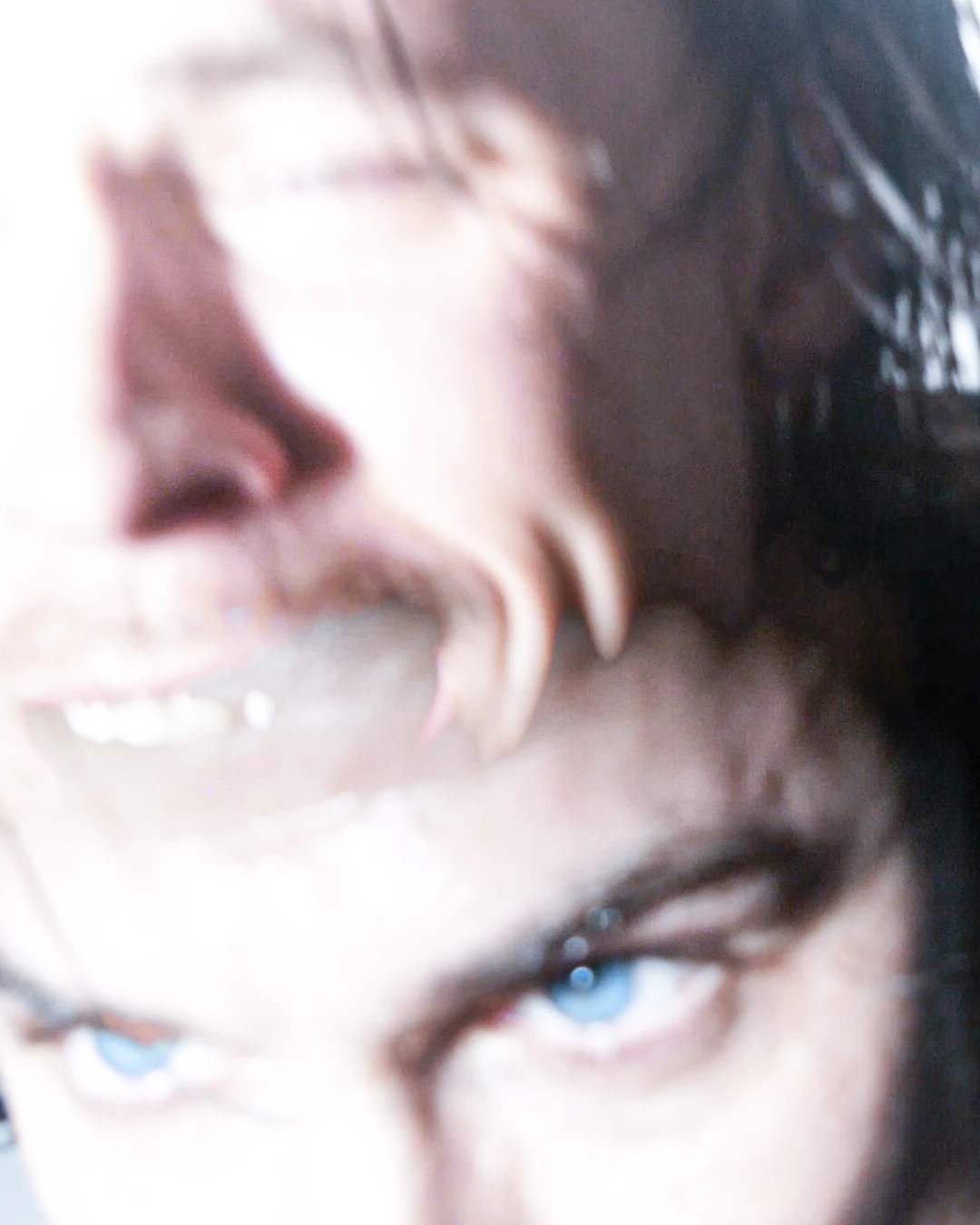
- Date
- 17 DECEMBER 2024
- Author
- DANIEL FACE
- Image by
- BJARKI SIGURðARSON & THOMAS HARRINGTON RAWLE
- Categories
- Interviews
Bjarki Runar Sigurðarson & Thomas Harrington Rawle on ‘A Guide to Hellthier Lifestyle’
In this exclusive interview with RED-EYE, Bjarki Runar Sigurðarson takes us behind the scenes of his highly anticipated new album, A Guide to Hellthier Lifestyle, set to release on the 7th of February 2025 via his newly founded label, Differance. Known for his genre-defying approach to electronic music, the Icelandic producer dives into the inspirations behind this concept album, offering an incisive critique of wellness culture, influencer façades, and the commodification of self-improvement.
Our conversation delves into the absurdities of modern life that Bjarki confronts with his signature blend of biting satire and boundary-pushing soundscapes. From AI-generated voices to hyper-stereo techniques, he shares how tracks like Real Insight dissect self-help culture while creating intricate audio landscapes that oscillate between dark humor and genuine vulnerability. “We’re sold this idea of perfection, but we’re living in chaos,” he explains.
The collaboration between Bjarki and visual artist Thomas Harrington Rawle is another highlight of our interview, with Rawle discussing the haunting video for Real Insight—a fusion of live-action and AI-generated doubles that examines the dissonance between avatars and our digital realities. Filmed in an unnamed forest, the video mirrors the album’s themes of identity, transformation, and disconnection, making this project as much a visual experience as a sonic one.
What drives Bjarki to tackle the chaos of modern existence with such unflinching honesty? How does he balance satire with moments of genuine introspection? Our exclusive interview explores these questions and more, offering readers a rare glimpse into the mind of an artist reshaping the boundaries of electronic music and modern storytelling.
Your upcoming album delves into themes of wellness and influencer culture. What inspired you to explore these topics, and how did they shape the tone of the album?
Bjarki: Before the album took shape, I was experimenting with new ways to create a more immersive listening experience. The theme came by interest on social media, after watching people selling their lifestyle and offering their definition of ‘’health’’. It’s so fascinating and absurd how easily people can profit from our insecurities. It’s like everyone is an expert in giving life advice and wellness, most haven't even lived a full day without their phone. Like houseplants, planted in Instagram soil, waiting for likes instead of sunlight and influencers like mannequins displayed with their perfect curated lifestyle, desperate for validation. This fake, self proclaimed wisdom pushed me into my own retreat, where I would process it all and make music about it! It’s a reaction to the absurdity, the contradictions, the hollow, corporate self help circus in front of us.
The title A Guide to Hellthier Lifestyle suggests a satirical lens on contemporary wellness. Can you share what this title means to you and how it ties into the album’s narrative?
Bjarki: The title is a certain play on the irony while exploring the paradox. It pokes fun at how we’re being sold this perfect version of life, while we’re actually living in chaos and really struggling, both with our own personal “hells’’ and a broken system. For me, it's a bit about confronting and accepting all of who we are, especially the messy parts, rather than escaping into a sanitised, idealised version of well being. No amount of 'good vibes' can cure what's been festering beneath the surface for years. We all have our flaws, traumas, and vulnerabilities and pretending they don't exist or they can be healed with a juice cleanse or meditation or a month to Bali is wonderful ignorance which also interests me. I wanted the album to be sort of a guide to explore these aspects within ourselves, from the dark to the light, in all their complexity. I believe we are dynamic and messy. Hell, in its rawness, holds more truth than the polished illusion of heaven.
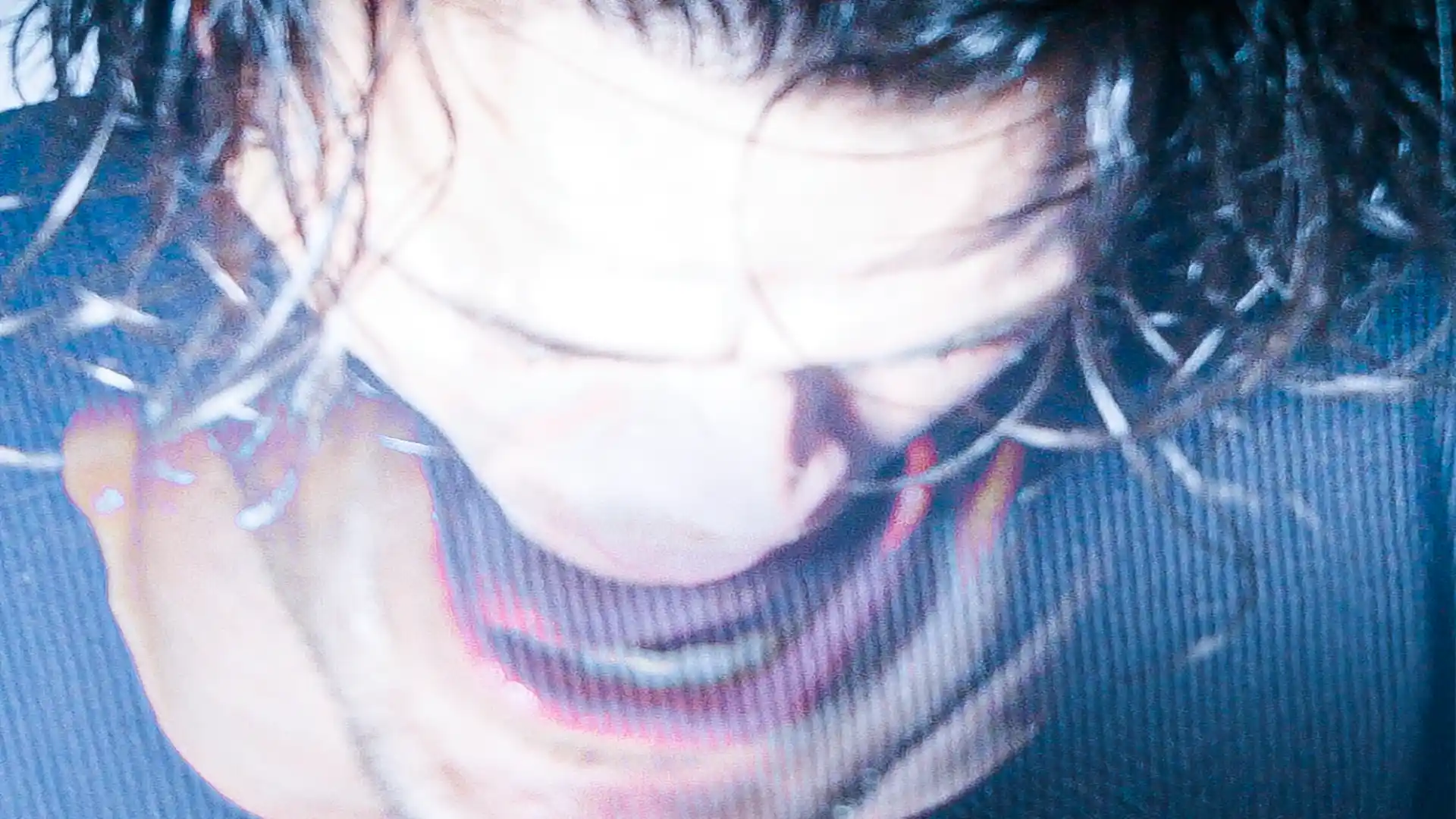
How did the album’s concept evolve as you worked on it—from the initial idea to the final product? Were there any unexpected turns in the process?
Bjarki: The album took several turns. It started satirical, but as I delved deeper it became more introspective. I began to explore more themes on personal struggles, the contradictions within myself, and the chaos I was observing in the world around me. I found myself reflecting more on the shared human condition, beyond just the external chaos.
The track listing process was particularly long. I spent half a year just moving tracks around, trying to find the right flow, listening in different environments - mostly outdoors. The natural surroundings helped me hear the songs in new ways while catching the reactions from my friends. Then going back to the studio and changing things. It became less about fitting everything I made into a perfect box but more how it would breathe and evolve. I’m very hyperactive in my brain, so I intend to start over when I get bored or stay too long with something. So it was like a funny satire album, then it was deep and spiritual. Then back to the introspection tone, it was evolving as I was evolving. In the end, I feel it’s curated with bits of it all.
‘Real Insight,’ with visuals by Thomas Harrington Rawle, looks like a striking blend of human and artificial forms. How did you and Thomas develop this aesthetic, and what themes are you exploring in the video?
Bjarki: There’s something about creating music and lyrics that have a delicate balance of something fragile and awkward. Thomas is one of these new pioneer film makers who I resonate deeply with. He’s very similar with his films as I am with my music. It can make you wonder, laugh, and choke up. He can totally jump into anything I do and the footage will make sense of it all. The video is an excellent example of combining creativity with the support of AI, CGI, and new technology to create something unique. People really like to resonate with themselves. It’s part of our DNA. So seeing a person, changing can be triggering and relating. Everyone who watches it has their own answers about what it might mean to them. I love to provoke, but I want to be smart about it. It’s easy to just throw random words together, slap a TR909 on it and call it a day. But the real deal if it makes you shiver, or relate with those hidden parts of your psyche that we often keep buried but secretly longing to express.
You’ve described this album as both a rebellion and a reflection. How do you channel these opposing energies in your soundscapes and production?
Bjarki: It's a rebellion against the world that keeps telling us how we should be, what we should look like, what we should want. But in that rebellion, there’s also reflection.
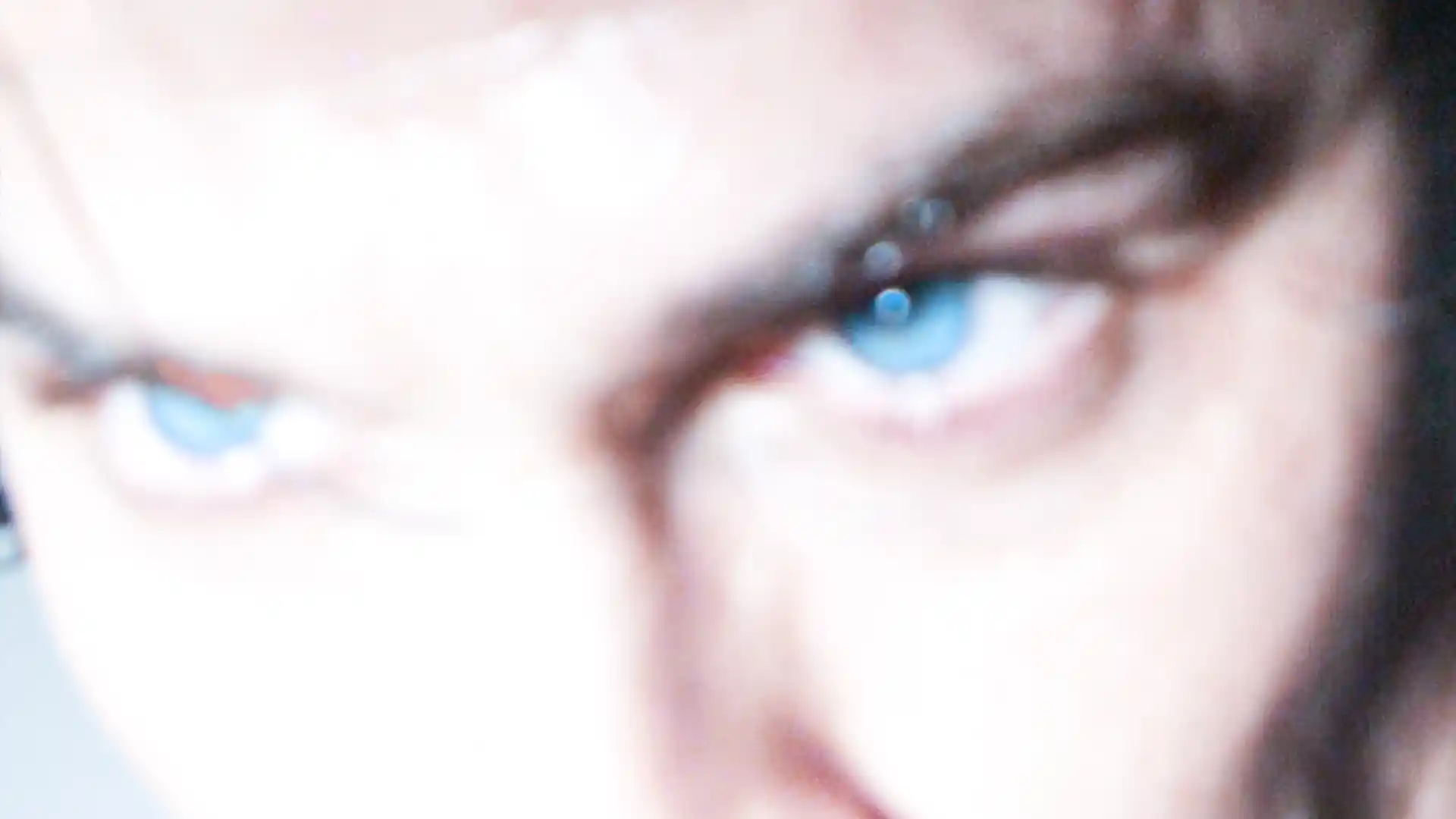
You’ve worked with AI-generated voices and experimented with hyper-stereo techniques. How do you see these tools shaping the future of your music?
Bjarki: Maybe more storytelling, I need to overthink and over analyse to feel everything, and end up questioning my life choices while I’m at it. But the goal is to create music that leaves you a little unsettled, but satisfied because, hey, we want our customers coming back. As well I wanna push the limits of what I expect from my music and sound. Make it almost tangible, like you can touch it, lick it, feel it in your bones. Frequencies that get under your skin, that make you question your thoughts. It’s about the concept and the themes and how to wrap it nicely. But I’m in no rush. Don’t rush art, or it will become... fart…fart.. As for the AI voices, I use it as an advanced speech synthesiser, which it is. The excitement is creating voices and characters that technically come from me but also not. It’s my own sound theater. If I grab the mic and do it myself, I can’t enjoy it as much. I don’t need to hear my own voice echoing back at me in the studio as well. I dream of pushing sound out of the speakers so hard that it literally gives birth and pops the most amazing sound right into your living room. I think that's my goal with spatial sound.
What excites you most about integrating new technologies like AI into your work? Are there challenges that come with it?’
Bjarki: The learning process, the frustration when it doesn’t work, and the small victory when it finally does. It's a bit of wrestling. The technical side can easily drown out the creative, like trying to paint a painting while someone's shouting, you call that art??? It works ..sometimes, but more often than not, I end up wasting a whole day, asking myself why I even started. When it comes to ai, it has to resonate with me. I have to believe it. With the voices I write the text without thinking too much, something that is really coming from my heart at that moment. Some telepathic messages that I spit out. I spend a lot of time tweaking the sound to get the voice right. If it doesn’t feel right, it's easy to become lame. I’m kind of only in this ‘’AI’’ for the voice generator thing, to create characters like Rave Daddy etc.. It’s interesting to resonate with a voice or a ‘’person’’ that doesn’t exist who still can trigger physical response and get you choked up about what they say. I can generate a thousand country songs with one click using AI, mostly about poop and farts. Maybe that’s the future and what people really want. I think the whole ‘’ai revolution’’ in general just gives me the creeps. I still like the old tech. It will always sound and look better. Always.
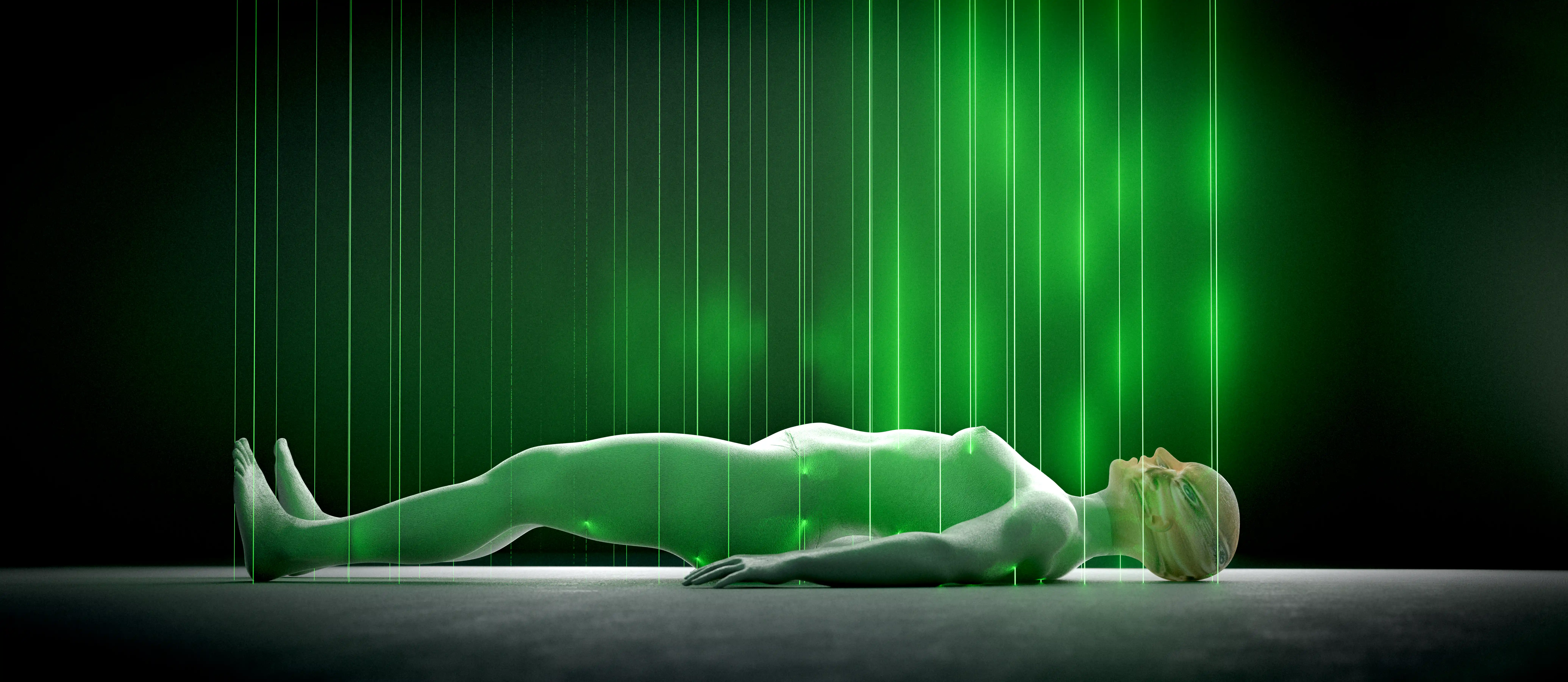
In your satirical AI-generated speeches, you’re critiquing wellness gurus and influencer culture. Did this experimentation open up new ways of storytelling for you?
Bjarki: The ideas keep pouring out. There are so many other themes that have emerged from this process that I would like to explore. I’m not even sure I’ll confine them all to music. As now I need a break from it all, but I’m making notes, from conversations that catch my ear or something funky someone says. I think a lot of those ideas are universal, tucked away, yet always there. Things that we all witnessed in our daily life but never really speak of, hidden in the basement of our minds. It just matters how to execute them and if there is an audience for it. I know these ideas and stories will evolve as I evolve. So who knows where they’ll go.
How do you see the relationship between technology and emotion in electronic music? Can machines help express the deeply human aspects of your art?
Bjarki: I can create something that’s deeply serious, but the moment I throw it out there, people think I’m joking. Sarcasm is my trojan horse smuggling in the real raw stuff with a layer of absurdity. That's the trick, innit? To get people to feel something by pretending it’s just a joke. The balance between the technical and the personal, that's the real dance. Technology is a tool that lets me translate emotions into a shared complex psychological sound space that I couldn’t express in any other way. These machines don't just make noise, they create an atmosphere that’s charged with feeling and emotions, both conscious and subconscious. Music is magic, it’s an unseen force that works its way into us. It’s alchemy, really. We can talk about things that aren’t present, things that exist somewhere between here and nowhere. How we transform that is a mystery and a mastery.
Your music is often described as a collision of rave, techno, and IDM with absurdist undertones. How does this new album push or expand your signature style?
Bjarki: I’m like a musical nomad, just wandering through genres with no map and no real intention of fitting in. I’ve always been drawn to sound design, and this album is pushing me closer to what I’ve been trying to create all along. It sounds like the music I’ve always wanted to make, the stuff that’s been swirling around in my head, pulling from everything I’ve listened to up to this point. It’s almost like the album has helped me define what comes next. It unlocked some doors I’d kept closed for a while... not sure if I’m ready for whatever's behind them, but I’m walking through anyway.
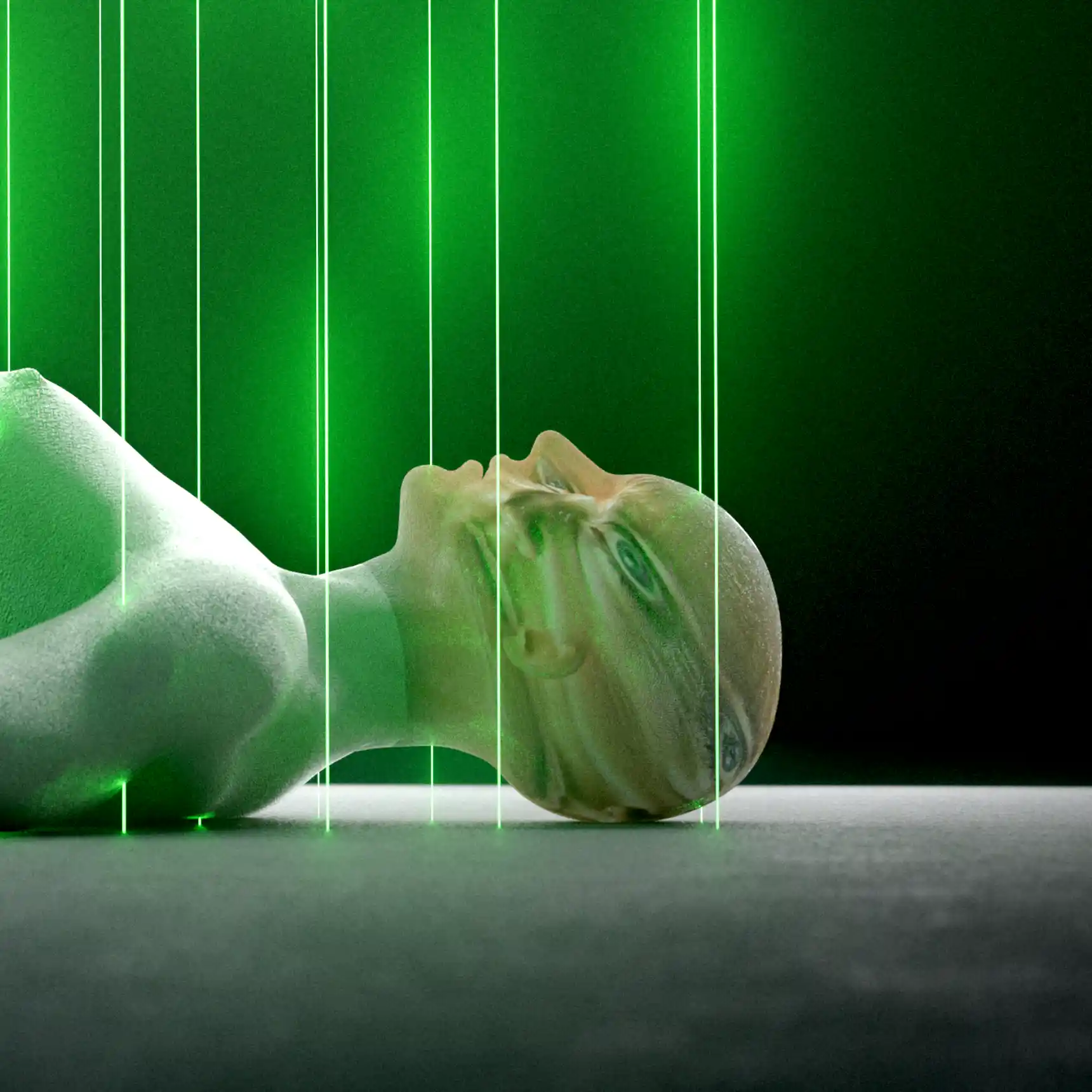
The album is yet to be released, but what kind of dialogue or emotions do you hope it sparks with listeners?
Bjarki: I hope it sparks an existential crisis… Of course I hope it gives a good mood to examine your own inner landscapes while listening and what you truly want to share and how you want to grow or unfollow.
You mentioned taking time to work in the Latvian countryside. Did this shift in environment change your creative headspace or the sounds you were drawn to?
Bjarki: I was holed up in a house in Latvia, practically untouched since the mid 2000s. There were receipts and old stuff lying around, like a time capsule of a forgotten era. It was great for the mood. The trees, lots of trees. They're very good at listening. It was less about the surroundings and more about the mental space I needed to finish the album. It was like the isolation of it all. a kind of rural silence matched the chaos I was trying to capture. But yeah, the trees definitely helped. No Joke.
You’ve spoken about the absurdity of modern life and finding light within darkness. How does this duality manifest in the album’s sound and structure?
Bjarki: It moves from chaotic, discordant noise to quieter, more introspective moments, but none of it offers a resolution. It's a bit like life itself, you move through it, you try to find some truth, but the real answer isn’t in the light. It's in learning to exist with the dark. That’s where the real stories are, not the sanitised wellness version we’re all forced to swallow.
What excites you most about sharing A Guide to Hellthier Lifestyle with the world, and what do you hope listeners take away from it?
A New Hellthier Lifestyle.
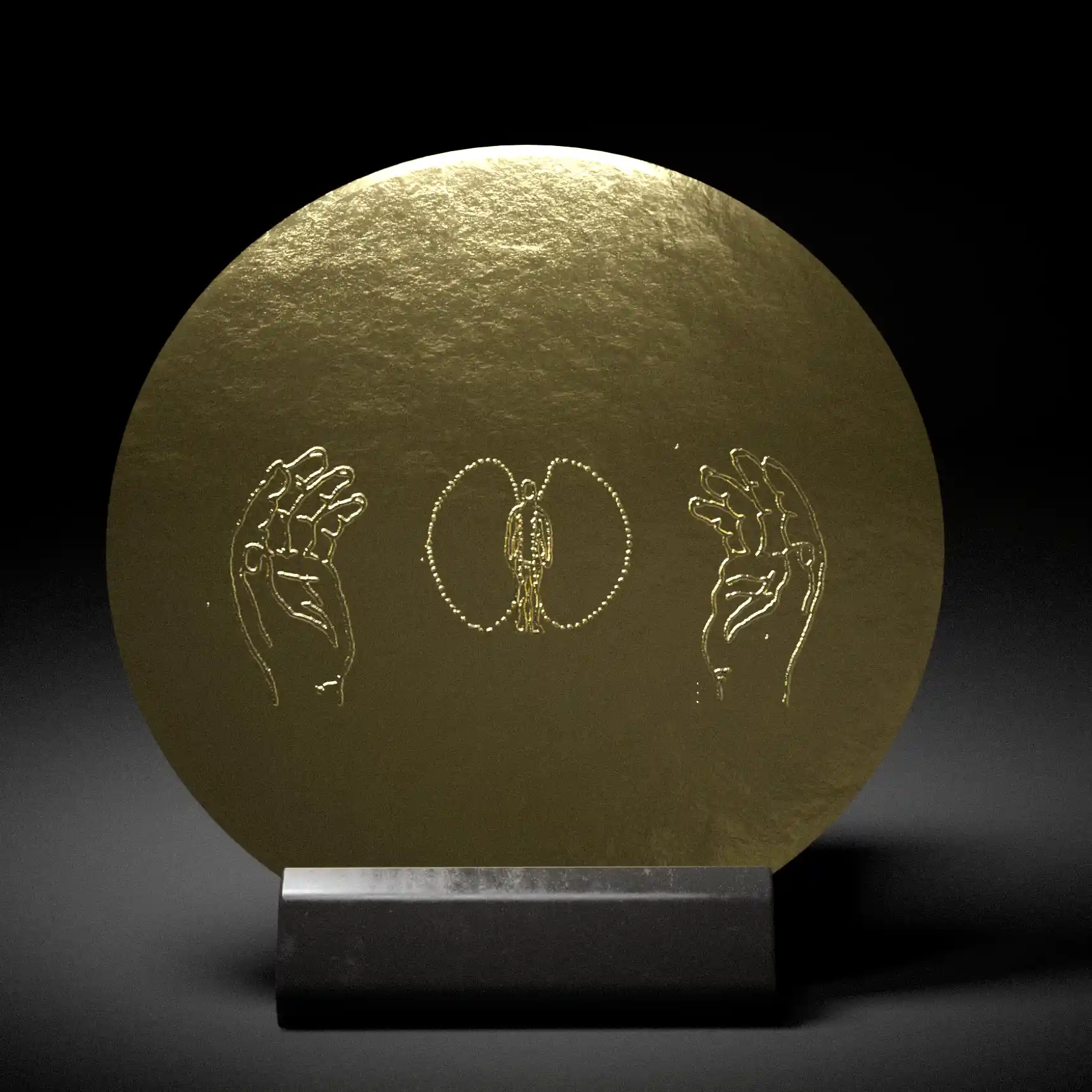
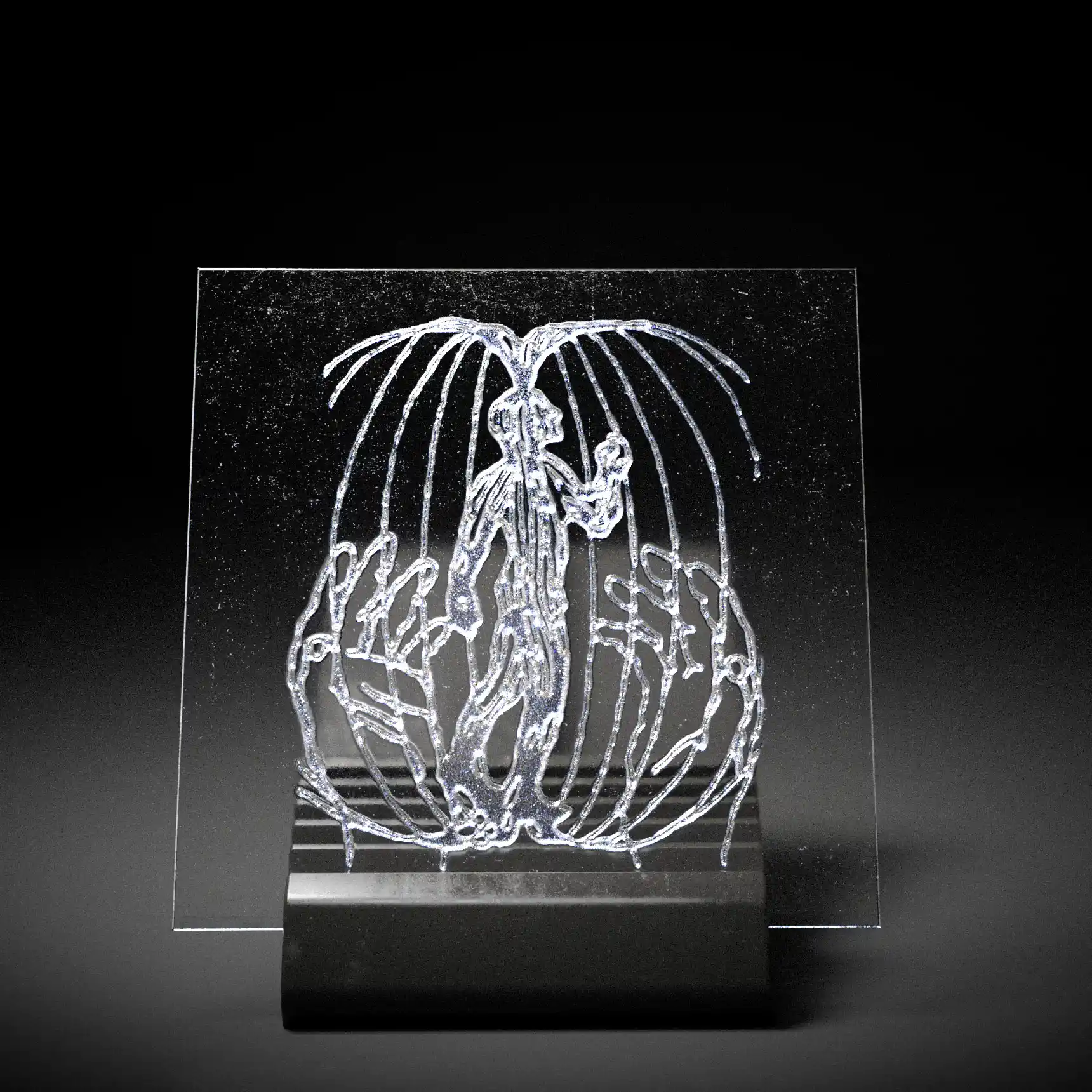
Your collaborations often integrate cutting-edge technology. How do you see tech reshaping visual storytelling?
Thomas: For me I think technology can be inspiring or helpful in 3 different ways... 1, it can shorten the path between an idea and production because it makes the creation process less labour intensive thus making it easier to 'improvise' & 'jam' in a more musical way. 2, the process of playing with a new technology itself can be inspiring. Trying to break it can create really interesting visual experiences, for instance I think a lot of the AI stuff is most interesting when it's broken. 3, the technology itself conceptually can be inspiring as a subject as much as it is a form. The relationship between the technology and the user and what that means for how the user defines themselves. A slight sidetrack but I found what Jaron Lanier said in 'You Are Not A Gadget' almost a decade ago now super interesting...'If you can have a conversation with a simulated person presented by an AI program, can you tell how far you've let your sense of personhood degrade in order to make the illusion work for you'
When working on large-scale immersive projects like those with Bjarki, how do you balance technological possibilities with creative vision?
Thomas:I try not to get carried away with what technology can bring to a piece of work but I do often fail with that because I love to tinker and learn things. I think primarily I try to keep things focused on what it is they are trying to 'say', but I'd like to be better at that. I think all great art is that way, Prince says something like art or music or whatever is a 'spotlight and a microphone', I've always really liked that idea as fundamental to a good art practice. I could also be misquoting there.
I like to imagine he said that!
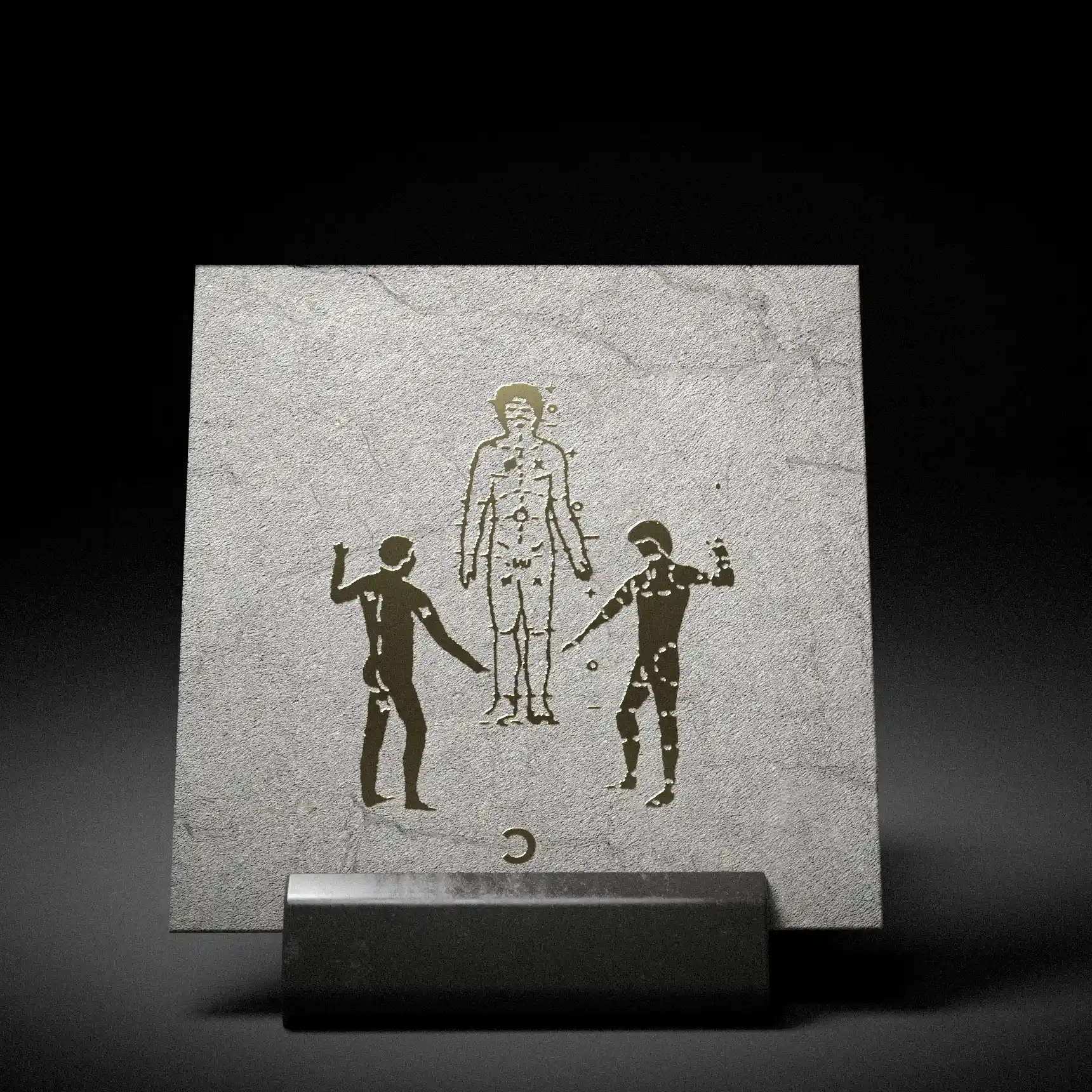
Music seems integral to your work. How do sound and visuals interact in your creative process?
Thomas: It's so important, I was originally a musician and producer myself and I always saw music as a visual medium in my imagination. I think most people do, you put on a record, you close your eyes, you see things or you put on headphones, go for a walk and it's like the landscape suddenly moves to the rhythm of the music. When we do the AV show all the visuals are triggered live and I'm on stage with Bjarki so it feels like we are really jamming and being able to work so fluidly to the music, in the moment, so it's a really special experience. Bjarki's music is filled with so much visual detail as well that it's always been an absolute pleasure making stuff to his work. We're creatively on a similar wavelength I think so it's always great to jam.
What was the collaborative process like with Bjarki for shows like NXT Museum or Houghton Festival?
Thomas: I think when me and Bjarki do an AV show we generally talk a lot about what feels disorienting about the time. This energy then gets piped into phrases and images that we blast into the crowd during the show. I think I try to take a bit of a leaf out of the Jenny Holzer book in the sense that I like to put messages you wouldn't expect to read or see in a certain context. I know the first time we played together in Sheffield, I put the phrase 'Look At Yourself' on the screen in big letters and it felt really powerful to be able to project a message like that in that environment. At the NXT museum show we made a website where fans of Bjarki could submit pictures. We then fed that through a host of different processing techniques, some with AI (GAN type things), and some more traditional compositing methods so the audience would see versions of themselves that were uncanny valley versions, that was a cool thing to do.
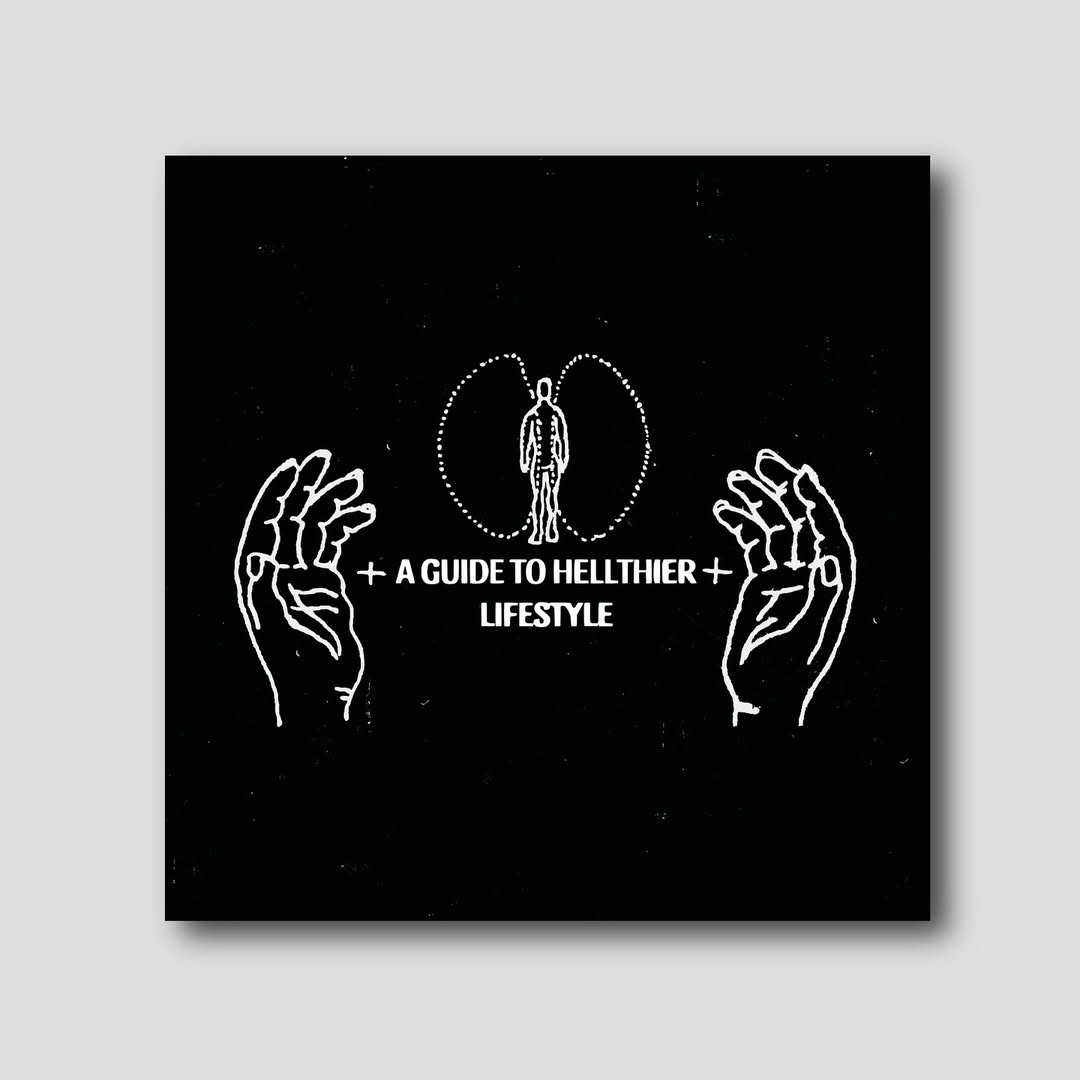
Do you prefer to create visuals that enhance existing music, or do you envision a symbiotic creation of sound and image from the start?
Thomas: I think both can be cool, when I work with Bjarki, often he'll send me music and I'll see things and then want to make them into something. Some other times I'll send him a film and he'll send me back a score and then I'll rework the film to the score. So, there is a bit of both. I think when both are in perfect harmony though it's like perfect cinema, all the artforms together as one big experience wave.
Are there any emerging technologies or tools you’re excited to explore in your upcoming projects?
Thomas: Yeah I mean there's literally something new every day now, so much of the AI stuff is wild as far as using it as a tool to speed up more traditional processes like rendering, compositing, motion capture, all of that. Some of the avatar-based stuff is quite wild. I've been running lots of experiments mainly with using vid to vid type processing to elevate renders. I feel like for all the new stuff that comes out, there's equally interesting ways to subvert how they should be used...That said I think the main thing I'm trying to work on is getting better at telling a story with the work that I do and the work that me & Bjarki do together. I hope that answers that question!
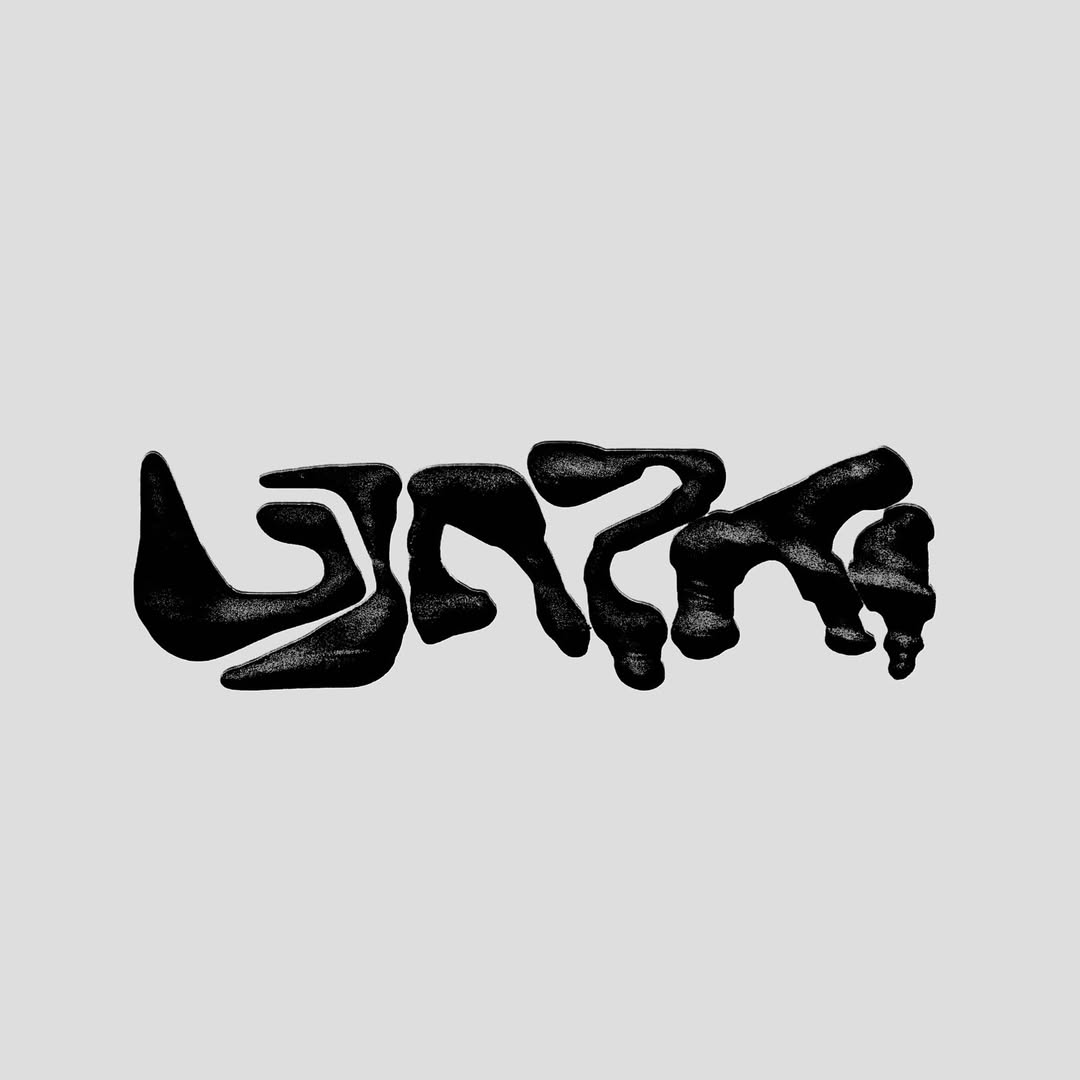
Interview by @danieleverse
Press @9pr_music
Music by@bjarkisigurdarson @differance.co.uk
Directed by @thomasharringtonrawle and starring @madelinemosss